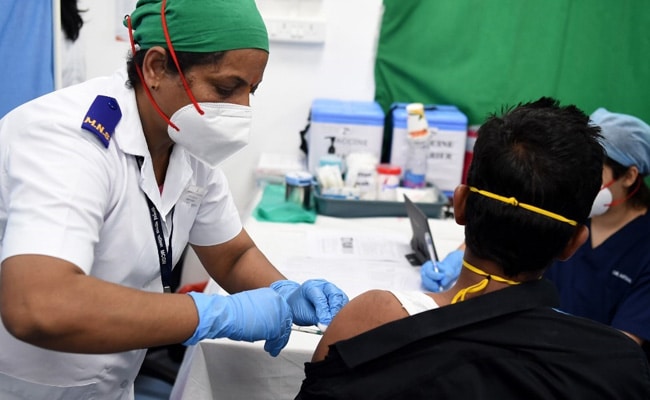On April 11, India recorded almost 170,000 Covid-19 cases, a record for the country since the start of the pandemic. The day before, India crossed a different kind of milestone: Vaccinating 100 million people. It is this seesaw of despair and hope that India rides today, battling the outbreak with a healthcare system operating on the brink even as its pharmaceutical industry tries to fill the world's prescription for vaccine doses.
India reached the 100 million vaccination mark in 85 days, faster than the U.S. and China, which took 89 and 102 days respectively. But the task ahead is formidable: the government of Prime Minister Narendra Modi has set a target of fully vaccinating 300 million individuals by July.
The arithmetic alone is daunting. India started with a stock of 100 million vaccine doses at the beginning of the year. Its two manufacturers - The Serum Institute of India and Bharat Biotech- are equipped to produce 66 million doses per month through June, adding 396 million to the total. But they also have obligations to supply Unicef's COVAX program and export agreements elsewhere to the tune of 80 million doses. That leaves 416 million doses for local use: 184 million doses short of the 600 million needed to reach the July goal.
Already, Pune-based Serum Institute - which makes the AstraZeneca shot, called Covishield in India - and Hyderabad-based Bharat Biotech - which makes the locally developed Covaxin - are at capacity. New vaccines from new manufacturers need to hit the market.
The shortage comes at a crucial time in the global fight against Covid-19 - and in India's until now impressive vaccine diplomacy. The shipments have gone from Asia to the Caribbean, from Africa to Latin America in boxes tagged with the Sanskrit phrase Sarve bhavantu sukhinah, "may all be happy." Bhutan has administered at least one dose to more than 60% of its population thanks to vaccines produced in India. New Delhi also supplied serum to Paraguay, which had been under pressure from Beijing to break its ties with Taiwan in order to secure China-made vaccines.

India reached the 100 million vaccination mark in 85 days, faster than the U.S. and China, which took 89 and 102 days respectively.
But the generosity of the diplomacy has earned the Modi government domestic ire. The Indian vaccine stock is distributed to all the states, which administer the healthcare system. The just-in-time replenishment has led to stock running out in some cities, generating criticism of inequitable vaccine availability as the exports continue and as local inoculations are limited to people 45 years old and above.
Many of the country's more industrialized states are suffering a surge in infections and want vaccine priority as well as an exception to age eligibility in order to serve their younger populations. The Modi government has categorically refused to do so. It is, however, working to allocate larger supplies to cities that have become pandemic hot spots.
There is potentially some relief ahead. Russia's Sputnik V vaccine was approved on April 12 by an independent expert panel and received immediate certification by the Drugs Controller General of India. Hyderabad-based Dr. Reddy's Laboratories will become a manufacturing hub for Sputnik, producing 1 billion doses, with with 250 million marked for local use. The Russian Direct Investment Fund is also in talks with other Indian manufacturers.
A vaccine from Zydus Cadila, an Ahmedabad-based firm, may be next to get an approval. Johnson & Johnson may soon undertake a bridging trial for its single-dose vaccine to be manufactured for local as well as export market - though its current pause in the U.S. to assess fears of blood clotting may become an issue in India as well. On April 13, the government also allowed the use of all vaccines certified by U.S., EU and Japanese regulators.
There is much to admire about India's efforts: It has managed to scale its medical manufacturing efforts to global proportions and earn the title of pharmacy of the world. When the pandemic ends, it will be with the tremendous assistance of India's pharmaceutical industry. But, right now, we are nowhere near declaring that victory. Even if India fully vaccinates 300 million citizens by July, that's just about one third of the total population. Meanwhile, the pandemic is raging unabated, sparing not even younger people. For now, India's fight against Covid-19 hangs in balance. And so does the world's.
Disclaimer: The opinions expressed within this article are the personal opinions of the author. The facts and opinions appearing in the article do not reflect the views of NDTV and NDTV does not assume any responsibility or liability for the same.
(Except for the headline, this story has not been edited by NDTV staff and is published from a syndicated feed.)


